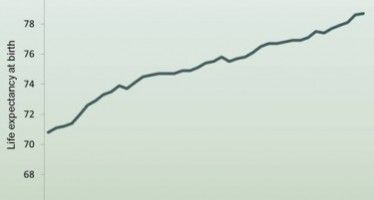Feinstein backfills some water for Central California

 Sen. Dianne Feinstein is coming through with her promise to backfill Central Valley farmers water they lost as part of her San Joaquin River Restoration Act of 2009.
Sen. Dianne Feinstein is coming through with her promise to backfill Central Valley farmers water they lost as part of her San Joaquin River Restoration Act of 2009.
Replacement farm water should have been provided before any diversions of farm water for fish runs depleted backup water storage for droughts. This is one of the major man-made reasons why California is experiencing historic water shortages in a foreseeably severe drought year.
River Restoration Act of 2009
In 2009, Sen. Feinstein pushed her San Joaquin River Restoration Act, H.R. 146, into law when Democrats controlled both houses of Congress and the presidency. The bill called for diverting 247,000 acre-feet to 356,000 acre-feet of water from farmers per year for restoring fish runs in the river.
The bill estimated, but did not allocate, up to $800 million for river restoration projects for fish. Only $88 million was allocated for initial planning activities. Feinstein’s bill also allocated $102 million to backfill water lost by farms for fish runs. However, these funds came from a $7 per acre surcharge on farmers’ water rates from the federal Central Valley Project.
From these new backfill water projects about 25,333 acre-feet of water per year will be developed to replace the 800,000 acre-feet of water flushed to the ocean for 305 fish in 2012 and 2013. These backfill water projects won’t be completed until about 2017 when the drought should be over.
Backfill Water Projects 2014 to 2017
On June 14, 2013, the U.S. Bureau of Reclamation started awarding funds to irrigation and water storage districts in the Central Valley for four of the backfill water projects to:
- Construct a 60-acre water recharge basin by the Tulare Irrigation District and the Kaweah Delta Water District (8,500-acre-feet).
- Construct the Madera Canal Intertie, a two-directional pipeline and pumping plant including a connection to groundwater banking facilities in Kern County (11,000 acre-feet).
- Build new pipelines for the Porterville Irrigation District (2,500 acre-feet).
- Develop a new groundwater bank for the Pixley Irrigation District (3,100 acre-feet).
All of the projects are still in the engineering design phase and expect to be completed in about 3 years, barring any environmental lawsuits.
Eastern Tulare County, which is served by the Friant-Kern Canal, is one of the hardest hit areas by the compound drought and man-made water shortage of 2014. There are few wells in this area from which to draw on during cutbacks in water from the canal.
This year customers of the Friant Water Authority were informed they would receive no water allocation. The normal allocation is 800,000 acre-feet of Class 1 (reliable) water and 1.4 million acre-feet of Class 2 (less reliable) water. However, this reflects only 1.1 percent of the total water allocation and won’t be available for about three more years.
Where is long-term drought planning for farmers?
The long-term problem is how to establish fish runs over a 60-mile hump in the San Joaquin River that runs dry except in infrequent wet years and still have water for farmers for droughts. The way this is solved now is releasing huge volumes of water in “pulse flows” that wash the fish out to the ocean. But the solution of diverting farm water for fish before backfilling that lost farm water for droughts and emergencies has resulted in a great, unplanned water-shortage disaster.
Rep. Tom McClintock, R-El Dorado Hills, has advocated creating artificial fish hatcheries as an interim solution until enough farm water is backfilled for droughts.
Lack of long-range drought policies is a worldwide problem, according to a recent article in the Christian Science Monitor, “Droughts’ Rise in Severity Raises a Question: Where is the Long-Term Policy to Help Farmers?”
A study warning that fish water diversions would lead to California water shortages was completed in 2008 by graduate students in the U.C. Santa Barbara Donald Bren School of Environmental Science and Management, supervised by economist Gary Libecamp, PhD. But such studies are scarce.
The University of California published a book in 1982 by Peter Hall that coined the term “Great Planning Disasters.” Hall stated in a workshop on April 10, 2013 that the way to improve the planning system is to “improve the quality of forecasts.” At present there are no drought impact forecasts required in court orders or legislation.
Related Articles
Hypocrite Arnold's Gas Guzzler
John Seiler: A day after his seven-year tenure wrecking California, Arnold got a parking ticket. The link has pictures. Guess
Smaller paper tears into bullet train; LAT maintains editorial silence
The Riverside Press-Enterprise last week published a crisp, definitive take on the bullet-train project's recent legal setbacks. Which indirectly raises
Life imitates sci-fi: Why CA pension crisis is sure to get far worse
The debate in California over public employee pensions has grown familiar in recent times. Those who demand reform finally appear




